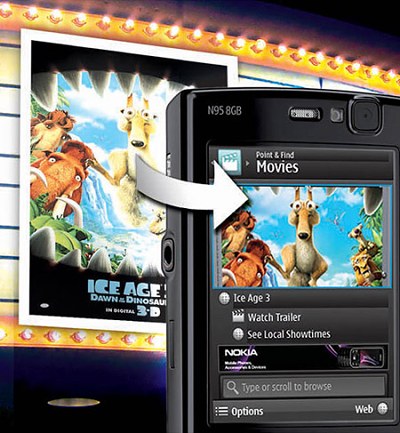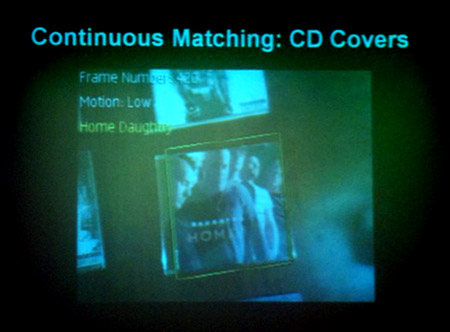From the “Who asked you anyway?” department…
I hadn’t really looked at Nokia’s Point & Find concept before, even though it has been shown around at least since Ubicomp 2007 and the public beta has been running since May09. After last night’s Nokia AR talk I thought I would have a peek.

OK, it’s a beta with limited functionality, and undoubtedly there are plenty of enhancements to the system and the business plan going on behind closed doors, so take this with a large scoop of salt because I only know what’s been said in public. But if I was advising Nokia on Point & Find, I would start with this:
1. The business opportunity is in the service for building and managing the image database, and managing all of the associated meta-behaviors like hyperlinking, bookmarking, purchasing, search, customer intent discovery, collaborative recommendations and so on. By building this physical-to-digital gateway between individual users and companies and institutions, Nokia can accelerate the development of the connected world platform and profit nicely from it as well.
2. The business opportunity for this is NOT in the handset. That should actually be great news for Nokia, because their core hardware business is highly commoditized and that’s a cold reality their employees have to live every day. In the long run, selling commodity hardware is not going to be the best strategy for Nokia (yes, that includes stuff like windows-based netbooks).
3. Point & Find should go on the iPhone and Android platforms, as soon as possible. Because the opportunity is in growing profitable services, not in fighting the low margin handset wars. Because the current AR hype is a swell marketing tool, and right now mobile AR is all about iPhones and gPhones. Because if Nokia doesn’t own image-based physical hyperlinking on those phones, someone else will, and that means the strategic momentum will shift. I realize this is totally countercultural, maybe even unthinkable, but that’s why it would be such an interesting play.
4. Nokia should open up an API to its backend service, so that any developer can make services that tap into that (hypothetical?) database of millions of images of products, printed ads, books, artworks and on and on. Developer momentum advances the entire market, and solidifes the platform’s competitive position. This can be one of those big web squared opportunities, if played right.
How about you, have you tried Point & Find? If you were Nokia, what would you do?


